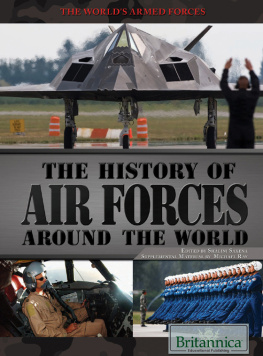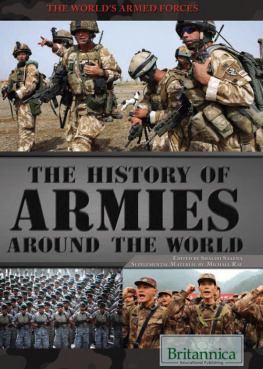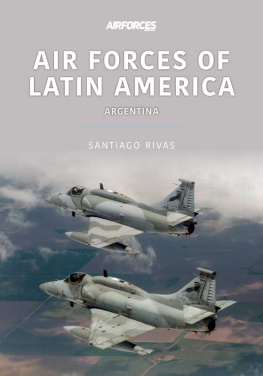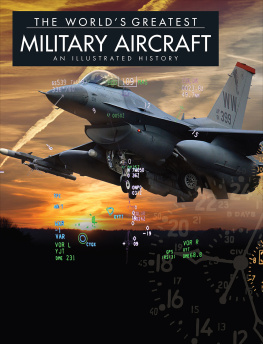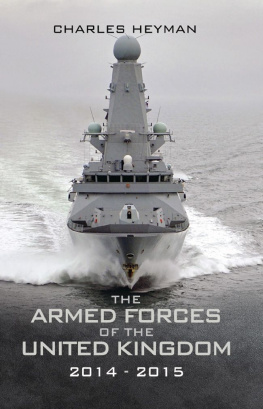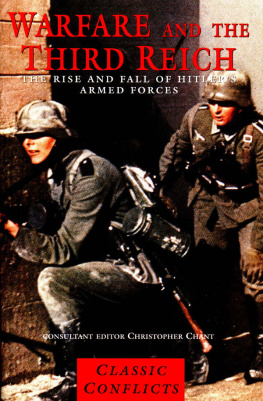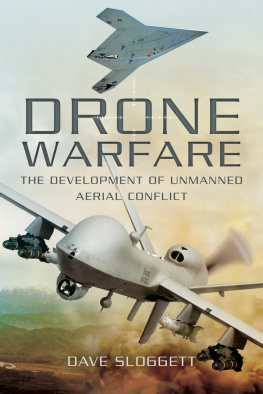

Published in 2014 by Britannica Educational Publishing (a trademark of Encyclopdia Britannica, Inc.) in association with The Rosen Publishing Group, Inc.
29 East 21st Street, New York, NY 10010
Copyright 2014 The Rosen Publishing Group, Inc., and Encyclopdia Britannica, Inc.
Encyclopaedia Britannica, Britannica, and the Thistle logo are registered trademarks of Encyclopdia Britannica, Inc. All rights reserved.
Distributed exclusively by Rosen Publishing.
To see additional Britannica Educational Publishing titles, go to rosenpublishing.com.
First Edition
Britannica Educational Publishing
J.E. Luebering: Director, Core Reference Group
Anthony L. Green: Editor, Comptons by Britannica
Rosen Publishing
Hope Lourie Killcoyne: Executive Editor
Shalini Saxena: Editor
Nelson S: Art Director
Brian Garvey: Designer
Cindy Reiman: Photography Manager
Library of Congress Cataloging-in-Publication Data
The history of air forces around the world/Shalini Saxena ; introduction and supplementary material by Michael Ray.First edition.
pages cm.(The worlds armed forces)
Includes bibliographical references and index.
ISBN 978-1-62275-146-4 (eBook)
1. Air forces.History.Juvenile literature. 2. United States. Air Force.History.Juvenile literature. I. Saxena, Shalini, 1982 editor.
UG630.H59 2013
358.4009.dc23
2013035358
On the cover, p. 3:(Top) An F-117 Nighthawk stealth vehicle of the United States Air Force. iStockphoto.com/Dan Prat. (Bottom left) A captain in the 40th Expeditionary Bomb Squadron of the United States Air Force piloting a B-52 bomber after a mission during the Iraq War. USAF/Getty Images. (Bottom right) Members of the Peoples Liberation Army Air Force of China marching in stride during a rehearsal drill before a parade in Beijing. Feng Li/Getty Images.
Cover and interior pages (camouflage pattern) iStockphoto.com/EvgeniyDzhulay
CONTENTS

An early balloon used for reconnaissance during the American Civil War. Library of Congress Prints and Photographs Division
C ommanders had long recognized the advantage that could be gained from controlling the skies over a battlefield. However, it was not until the time of the French Revolutionary Wars and the American Civil War that they could realistically achieve that advantage. Those conflicts saw the first uses of observation balloons to monitor an enemys movements. The inability to reliably steer balloons, their vulnerability to enemy fire from the ground, and their lack of offensive weaponry made balloons more of a novelty than a direct threat to opposing troops. Nonetheless, the skies had been militarized, and the 20th century would see radical changes in military doctrine to accommodate this new frontier in warfare and defense. This book will profile the technologies and tactics that have led to the growth and evolution of air forces from the earliest lighter-than-air craft to the unmanned aerial vehicles of the 21st-century battlespace.
One of the core concepts of military science is force projection. Force projection is the ability of a countrys military to conduct operations outside that countrys established borders. The greater a countrys force projection capability, the greater its influenceboth politically and militarilyaround the world. Early armies exercised force projection by maintaining frontier garrisons or patrolling roads that were frequently used by merchants or pilgrims. The British navy maintained control of the worlds sea lanes as a measure of force projection during the era of the British Empire (it retains some measure of that control to this day through its overseas territories).
The expansion of air power revolutionized the way in which countries could project force. The Japanese attack on Pearl Harbor in 1941 demonstrated that naval air power could be used in a devastating manner to strike targets thousands of miles away. The Berlin airlift, which utilized air transport to bring relief to the blockaded city of West Berlin in 194849, was a classic demonstration of soft power projection. The development of strategic weapons systems such as long-range bombers and innovations such as in-air refueling greatly expanded the sphere of action for air forces, and targets on the other side of the world were suddenly within reach.
The launch of the Soviet spacecraft Sputnik in 1957 inaugurated the satellite age and ignited the Space Race, as the United States and the Soviet Union sought to assert control of the final frontier. The Apollo astronauts went to the Moon, and private companies joined national governments in the orbital skies, as telecommunications satellites transformed the way in which information was transmitted around the world. The Navstar Global Positioning System (GPS), a constellation of satellites originally used by the United States Department of Defense for military purposes, has fundamentally changed the way in which humans navigate the world around them. Recognizing the soft power implications of a single country controlling such a powerful tool, Russia, China, and the European Union have all embarked on similar programs. Whether through soft power or hard power, air forces provide modern military planners with a range of optionsand challengesundreamed of by those early balloonists.
T his is an age of air power, and the military strength of a nation depends in great part upon the effectiveness of its air force. All of the major countries of the world maintain air forces as part of their defense systems. Air power also reaches into outer space, where satellites control modern weapons and communications systems.
The contemporary air force relies on computer and radar technology to control fleets of fighters, bombers, transports, and reconnaissance (spy) craft. Modern airplanes can carry missiles and bombs, as well as machine guns, while tanker planes can refuel fighters and bombers in the air to lengthen flight time.
Most of the worlds air forces organize their resources in similar ways. Air forces either are dependent units of an army, navy, or unified defense system or are autonomous service branches.
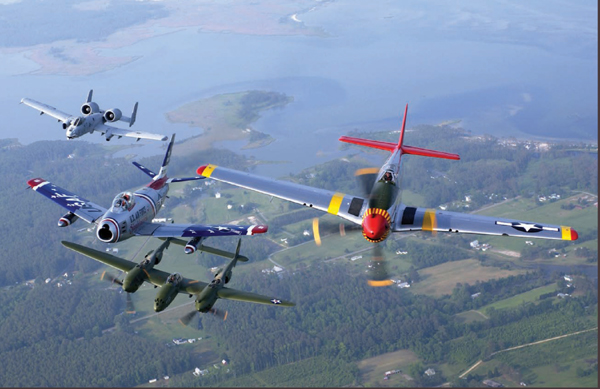
Four generations of aircraft of the United States Air Force flying over Hampton Roads, Va., in a Heritage Flight during an air show. U.S. Air Force/Getty Images
Air force members hold military ranks similar to those of other services. Commissioned officers are usually headed by generals, as in France, or by marshals, as in Great Britain. These are followed by some mix of commodores, colonels, group captains, lieutenant colonels, commanders, wing and squadron leaders, lieutenants, and pilot officers. Enlisted men and women generally include sergeants, corporals, privates, and aircraftsmen.
In many nations the smallest units of planes and personnel are called flights. These traditionally consist of three or four aircraft. Larger organizational units include squadrons, wings, divisions, and commands. The major combat commands of the United States Air Force, for example, are each organized into at least two divisions. They, in turn, contain wings of dozens of planes. Wings are further divided into squadrons composed of several flights of aircraft.

